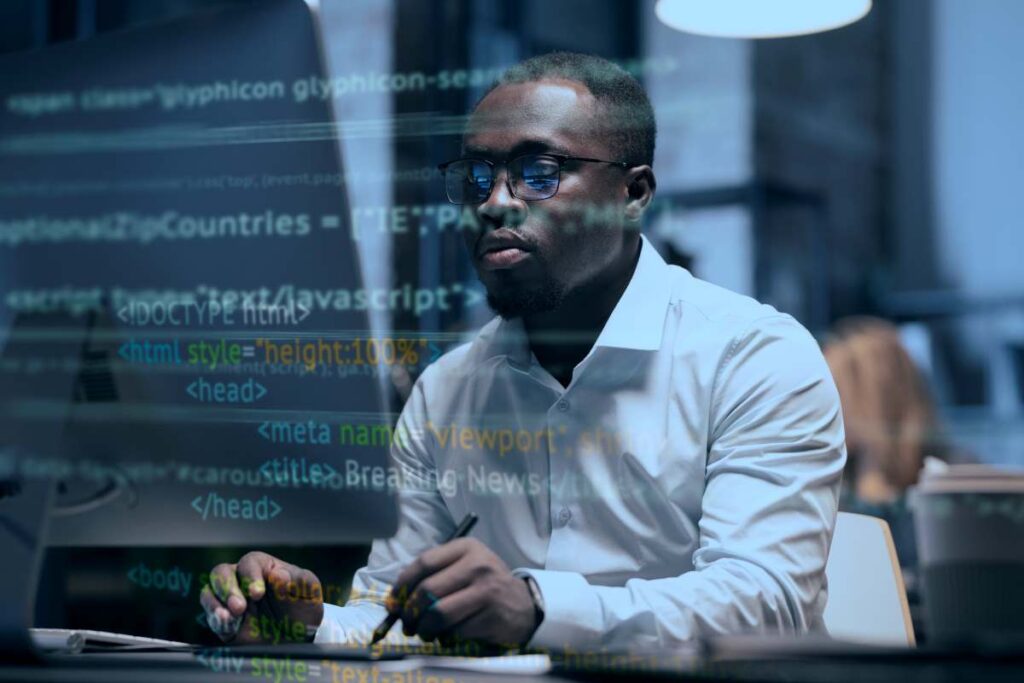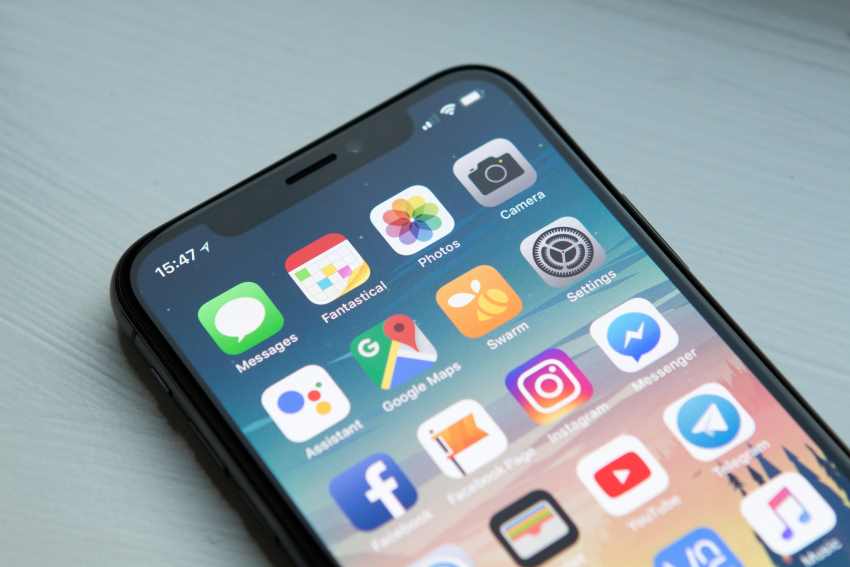Last Updated on March 20, 2024 by Chukwuemeka Maduka
Introduction to No Code
Many people and businesses still think that you must know how to code to be able to build websites or mobile apps or web applications!
This is not so true anymore!
According to Ryan Hoover, Founder of Product Hunt in “The Rise of No Code“, “You no longer need to become a programmer to build things on the internet, empowering a new wave of makers from different backgrounds and perspectives.”
Traditionally, building a website or an app required coding knowledge. This meant that only a small percentage of people were able to create their websites or apps for a long time.
However, the emergence of no-code tools has changed the narrative.
No code tools allow anyone to create a website without any coding experience!
The no-code market is growing rapidly and in 2022, the global no-code market was valued at $13.8 billion.
Incredible! …Isn’t it?
It is projected to grow to $272.2 billion by 2028, at a CAGR of 40.5%.
The growth of the no-code market is being driven by several factors, including:
- The increasing demand for easy-to-use and affordable web development tools.
- The growing number of small businesses and startups.
- The need for more personalized and interactive websites or applications.
The no-code market is also being driven by the growing number of small businesses and startups.
These businesses often do not have the budget to hire a web or app developer, so they turn to no code platforms to create their websites or apps.
WordPress is the most popular no-code tool for building websites and it is the most popular content management system (CMS) in the world. It powers over 43% of all websites on the internet.
WordPress is a popular choice for both individuals and businesses. It is easy to use, even for people with no coding experience at all.
WordPress also has a large community of developers and plugins, which makes it easy to customize your website.
The internet has become an essential part of our lives. We use it to communicate, access global opportunities, shop, learn, and be entertained.
But;
- What if you want to create a website or app of your own without coding?
- What if you want to create an online presence or online office for your business without coding?
- What if you want to build credibility for your business by leveraging a business website without coding?
In the past, building a website or an application required coding skills. This means that you must learn how to code a website from scratch before you can have one.
But thanks to the rise of no-code website development platforms like WordPress, anyone can now create a website without writing a single line of code!
What is No-Code Development?

No-code website or app development is the process of creating a website or an app using visual tools and drag-and-drop features.
This makes it possible for non-technical users to build websites or apps quickly and easily, without having to learn how to code at all.
No-code website development is revolutionizing the way websites are built, allowing individuals without coding skills to create stunning, fully customized, and functional websites.
In this blog post on GREENLEARNERS TECHNOLOGIES, we will discuss the benefits of no-code development, the different types of websites or apps you can build without coding, and how to choose the right no-code platform for your business or project.
We will also provide a step-by-step guide on how to build a no-code website from scratch!
So, Let’s dive in!
Understanding No-Code Development

Even though No-code development is a relatively new field, it is growing rapidly!
A recent study by Gartner predicts that by 2025, 70% of new applications will be developed using low-code or no-code platforms.
The study, which was published on November 10, 2021, found that the no-code/low-code development market is expected to grow from $13.8 billion in 2021 to $272 billion by 2025.
This means the market is expected to grow by more than 1871.01% in just four years!
This is a staggering growth rate, and it is indicative of the growing popularity of no-code and low-code development platforms.
This growth is being driven by several factors, including;
- the increasing demand for faster and cheaper application development,
- the growing number of non-technical users who want to build applications, and
- the increasing availability of powerful no-code/low-code platforms.
No-code development refers to the process of creating applications or websites without the need for traditional coding languages like HTML, CSS, JavaScript or Python, and so on.
It empowers individuals to build sophisticated websites by leveraging drag-and-drop interfaces, pre-built components or templates, and visual builders.
This democratization of web development has lowered the barrier to entry and opened up endless possibilities for creative expression.
Unlike low-code development, which requires some coding knowledge, no-code development tools are designed to be accessible to non-technical individuals.
This makes it easier and quicker to bring ideas to life without the need for extensive coding expertise.
The no-code movement has been gaining traction in recent years, with an increasing number of developers, entrepreneurs, and businesses embracing this approach to create innovative and lasting solutions.
This rise in popularity can be attributed to the flexibility, efficiency, and cost-effectiveness that no-code development offers.
Few key reasons why No code development is growing faster nowadays
There are a few key reasons for the growth of no-code development. These include;
First, it is becoming increasingly easy to use no-code platforms. The user interfaces are becoming more intuitive and user-friendly, and the features are becoming more powerful.
- Second, no-code development is more affordable than traditional web development.
No-code platforms typically have a low monthly subscription fee, and there is no need to hire a web developer.
- Third, no-code development is more accessible to non-technical users.
Anyone with a basic understanding of how to use a computer can build a website using a no-code platform.
Why no-code?

No-code systems simplify task execution for users of all skill levels, which improves the workplace environment.
For instance, research by Forrester Consulting found that organizations using no-code technologies cut the time it took to develop applications by 50%.
The research, which was published in November 2021, surveyed 175 organizations that had used no-code or low-code platforms to develop applications.
The survey found that the average time to develop an application using a no-code or low-code platform was 6 months, compared to 12 months for traditional development methods.
The research also found that organizations using no-code or low-code platforms were able to reduce the cost of development by 30%.
This is because no-code and low-code platforms require fewer developers and less technical expertise.
The research concluded that no-code and low-code platforms are valuable tools for organizations that want to accelerate their development process and reduce costs.
Also, dynamic developments in website construction have been made possible by the progression of no-code web development platforms from straightforward “What You See Is What You Get” (WYSIWYG) editors to complex systems.
A study by W3Techs found that over 37% of the top 10 million websites employ JavaScript libraries, demonstrating the predominance of dynamic content, supports the shift to more interactive and visually appealing websites.
The applications of no-code tools extend beyond mere website design.
They encompass a spectrum of functionalities, including internal tooling, integrations, voice applications, and both mobile and web apps.
With remarkable effectiveness, Shopify has enabled individuals to establish and manage online businesses without the necessity of coding knowledge.
Similarly, the integration capabilities of Zapier have been instrumental in connecting numerous applications, leading to its reported use by over 4.5 million people worldwide.
Platforms like Airtable have enabled teams to create specialized solutions that improve business processes, broadening the scope of no-code solutions.
The market demand for flexible no-code tools is clear, as seen by Airtable’s reported worth of $5.77 billion as of August 2021.
No-code empowers non-technical users and spares engineers the tiresome task of starting from scratch when creating complicated projects.
This shift is captured by the 2021 Developer Survey from Stack Overflow, which highlights the growing tendency of developers to integrate no-code solutions into their workflows.
The peaceful coexistence of coding experts and supporters of no-code is advantageous for the technological ecosystem, as shown by GitHub’s endorsement of the no-code movement through its acquisition of No-code in 2022.
The impact of no-code is profound.
As seen from the increasing adoption of these tools, it’s clear that they are not replacing developers but rather augmenting their capabilities.
No-code tools foster collaboration, creativity, and efficiency, whether it’s enabling designers to spearhead website projects, facilitating the launch of startups, or allowing developers to focus on intricate challenges.
With no code, the horizon of technological innovation is wider and more inclusive than ever before.
No-code platforms can help businesses to save time and money on development costs, and they can also help businesses to be more agile and responsive to change.
For example, the no-code platform Bubble was used to create the app “COVID Alert BC”, which was used by over 2 million people in British Columbia to track COVID-19 cases and contact tracing.
No-code platforms can also help to bridge the digital divide.
Developers, and others with deeper technical backgrounds, are freed from the burden of writing huge amounts of code from scratch — allowing them to dedicate their time to more sophisticated projects.
No-code doesn’t eliminate the need for them.
There will always be a demand for their expertise in creating and fine-tuning technology solutions.
Developers have already created so much value for the world.
No-code tools and platforms finally allow those with no coding expertise to join in with our ideas.
Whether it’s allowing designers to take charge of a site, helping someone launch a business, or just freeing up developers to spend more time on technically complex problems, no-code empowers everyone!
Benefits of No-Code Website Building

No-code website building offers a plethora of advantages that make it an appealing option for both individuals and businesses.
There are many benefits to building a website using no-code tools. Here are a few of the most notable benefits:
- No-code simplifies prototyping
No-code platforms offer an abstraction layer over code. Meaning, they take the fundamentals of code and translate them into a simple drag-and-drop solution thereby allowing creators to build modern apps and websites visually.
Initial prototypes of a digital product often don’t need anywhere near the engineering investment as they do at the launch stage.
Early on, something as simple as a series of well-designed images (like an InVision prototype) might be enough to communicate the core idea to potential investors, early adopters, and future team members.
As the concept evolves, more and more fidelity will be required.
Even then, tools like Webflow, Bubble, Glide, and Voiceflow may deliver highly robust experiences that may be more than enough to excite attention and validate assumptions.
And once you’re ready to start pushing your ideas to the public, Webflow, Bubble, and Carrd make for beautiful, highly efficient tools for the landing pages you’ll need to communicate your core value proposition and other benefits.
- Fewer dependencies
No-code tools are pretty cool because they help regular people make things without needing a lot of help from professional developers.
Imagine you’re working on a project, like making a website. Normally, you’d need different experts for different jobs: people who plan the content, people who design how it looks, and people who build it all.
But with no-code tools, things become easier.
Take a tool like Webflow, for example.
It lets people who plan the content and design the website put everything together like a puzzle.
They don’t need to be super tech-savvy because the tool takes care of the technical stuff in the background.
Before, making a website was like making a recipe with many cooks – one for each step.
But now, it’s more like everyone can bring their ingredients to the table and make something yummy together.
This doesn’t mean that professional developers aren’t needed anymore; they still have really important jobs.
No-code tools just let them focus on trickier projects, while the rest of us can easily make simpler things like websites and pages.
- A faster path to launch any project
Using no-code platforms can speed up how quickly you launch new things.
Instead of waiting for technical experts, your marketing and design teams can do things like adding forms to your stuff without needing an engineer to create a database.
This helps your marketing team work more independently, making the launch process faster and smoother. For example, your designer can add forms without needing a developer’s help.
Even more, your content strategist can manage how things are organized and structured instead of asking an engineer to set up a database for dynamic content.
And your marketing team that deals with paid ads can launch new campaigns with their custom-made pages.
It’s a bit like how smaller teams can often get things done faster than bigger teams.
But remember important steps like research, talking to experts, and getting feedback from stakeholders shouldn’t be skipped.
Even if they slow things down a bit, they’re really necessary to make sure everything goes well.
Sometimes, you can even do these steps while working on other things at the same time.
- Lowered production costs
Due to their considerable training, important roles in product development, and generally higher cost, developers and engineers are frequently more expensive than the ordinary member of the marketing team.
Therefore, whenever you can cut a developer’s or engineer’s time out of the project equation, you not only save time but also incredibly valuable money.
Traditional website development can be expensive, especially when hiring a professional developer.
No-code tools eliminate the need for coding expertise, making it a cost-effective solution.
Even at GREENLEARNERS TECHNOLOGIES, we deploy no code tools like WordPress to build professional websites for our clients at lower costs than we will charge to develop a website from scratch.
This is because, there is no need to hire a web developer, and the monthly subscription fees are typically very low.
You can save money by building your website independently or hiring a no-code specialist at a fraction of the cost.
- Speed and efficiency
With no-code tools, you can significantly reduce the time and effort required to build a website.
The intuitive interfaces and pre-designed templates make the process faster and more streamlined.
You can focus on customizing the website to fit your needs rather than starting from scratch.
- Accessibility to non-technical individuals
One of the biggest advantages of no-code development is that it empowers non-technical individuals to create their websites.
You don’t need to possess coding skills or hire a developer to bring your ideas to life.
No-code platforms make it possible for anyone to build a website, regardless of their technical skills.
You don’t need to know how to code to create a professional-looking website with a no-code platform.
This accessibility fosters creativity and democratizes web development.
- Iterative development
No-code platforms often offer easy ways to iterate and make changes to your website.
This agility allows you to experiment, adapt, and refine your website as you go along.
No-code platforms make it easy to iterate on your website. You can make changes and improvements quickly and easily, without having to worry about breaking your website.
You can easily tweak designs, test different layouts, and add new functionality without rewriting code.
- Scalability
No-code platforms can be scaled to meet the needs of your growing business.
You can add new features and pages as your business grows, without having to worry about hiring a web developer.
What’s the difference between low-code and no-code?

Low-code and no-code are both types of platforms that allow people to create applications without extensive coding knowledge.
They’re designed to simplify the development process and make it accessible to a broader range of individuals, from non-technical users to experienced developers.
- Low-Code Platforms:
Low-code platforms provide a visual environment for building applications with minimal coding.
They offer pre-built components and tools that can be customized to create more complex applications.
While some coding might still be necessary, it’s usually simpler and more focused on connecting components.
- No-Code Platforms:
No-code platforms take simplicity a step further. They allow users to create applications entirely without writing code.
These platforms use visual interfaces, drag-and-drop functionalities, and predefined templates to build applications, making them extremely user-friendly.
The two main distinctions between low-code and no-code, namely functionality and usability, are best thought of as two ends of a spectrum.
Some no-code platforms demand zero coding experience or even a rudimentary understanding of program operation and design.
However, many others permit “citizen developers” or non-programmers to add some unique code to carry out comparatively easy discrete tasks, including adding scrollbars, navigation buttons, or unique colors to websites.
Even yet, these lines of code are frequently located in easily accessible prefabricated code snippets that may be swiftly added.
No-code software blocks are easier to maneuver for non-programmers, but they can be difficult to add more complex tasks.
By comparison, IT professionals with some programming skills could use low-code software to add those discrete functions.
Low-code platforms also offer better integration with legacy applications, and greater application development, testing, and extensibility.
Low-code and no-code platforms stem from earlier rapid application development initiatives, which typically leveraged object-oriented programming languages such as C++ and Java.
No-code development platforms

According to WIKIPEDIA, No-code development platforms (NCDPs) allow the creation of application software through graphical user interfaces and configuration instead of traditional computer programming.
No-code development platforms are closely related to low-code development platforms as both are designed to expedite the application development process.
However, unlike low-code, no-code development platforms require no code writing at all, generally offering prebuilt templates that businesses can build apps with.
These platforms have both increased in popularity as companies deal with the parallel trends of an increasingly mobile workforce and a limited supply of competent software developers.
Hundreds of vendors offer no-code platforms.
Hundreds more offer tools to be used with these platforms. Some low-code platforms offer both low-code and no-code capabilities. Examples of no-code platform vendors include:
- Bubble:
Bubble allows users to create web applications with a visual interface, making it suitable for a range of projects from simple prototypes to complex apps.
- Adalo:
Adalo focuses on building mobile apps with no coding required. It offers a variety of UI components and features for creating user-friendly apps.
- OutSystems:
OutSystems provides a low-code/no-code platform for developing web and mobile applications, offering a balance between customization and ease of use.
- AppSheet:
AppSheet lets you turn data into functional apps using spreadsheets, making it easy to create applications based on existing data.
- Thunkable:
Thunkable is designed for building mobile apps with an emphasis on simplicity and visual design, catering to beginners and experts alike.
- Wix:
While known for website building, Wix also offers a no-code platform for creating web applications with interactive elements and dynamic content.
- Zoho Creator:
Zoho Creator enables users to build custom applications for business processes with its intuitive drag-and-drop interface.
- Glide:
Glide specializes in turning spreadsheets into web apps, making data-driven applications accessible without coding.
- Appgyver:
Appgyver offers a comprehensive no-code platform for building web and mobile applications, providing advanced features for more complex projects.
- Nintex:
Nintex focuses on process automation and workflow management, allowing users to automate business processes without coding.
- WordPress
WordPress stands as a prime example of a no-code development platform, empowering users to effortlessly create websites and blogs through its intuitive visual interface, themes, and plugins. With its user-friendly approach, WordPress enables individuals and businesses to build online presences without the need for coding expertise.
- Appian:
Appian offers a robust no-code platform for creating business applications with a focus on process automation and workflow management.
- Appy Pie:
Appy Pie provides an easy-to-use platform for building mobile apps without coding, catering to a wide range of industries and needs.
- Betty Blocks:
Betty Blocks offers a no-code platform for creating enterprise-level applications with an emphasis on speed and flexibility.
- Nintex:
Nintex specializes in process automation and workflow management, allowing users to automate business processes without coding.
- Quickbase:
Quickbase offers a no-code platform for building custom applications to streamline business processes and manage data.
- Outgrow:
Outgrow focuses on interactive content creation, enabling users to build calculators, quizzes, and other engaging elements without coding.
- Zudy Vinyl:
Zudy Vinyl provides a no-code platform for building enterprise applications that connect to existing databases, allowing for rapid app development.
Examples of no-code third-party tools include:
- Carrd
- Glide
- Gumroad
- Memberstack
- Notion
- Payhere
- Shopify
- Stripe
- Voiceflow
- Zapier
What can you build with no code?

No-code platforms can be used to build both websites and apps. Many no-code platforms offer tools that allow you to create a wide range of digital products, including:
- Websites:
No-code platforms often provide drag-and-drop editors and pre-designed templates that enable you to create websites without any coding knowledge.
You can customize the layout, design, content, and functionality of your website using these visual tools.
- Web Applications:
Beyond basic websites, some no-code platforms allow you to create more advanced web applications with interactive features, databases, and dynamic content.
These platforms often provide options for building forms, user interfaces, and workflows.
- Mobile Apps:
No-code platforms can also be used to build mobile apps for both Android and iOS platforms.
You can design the user interface, add features, and define app behavior using visual tools without writing code.
- Web and Mobile App Integrations:
Many no-code platforms offer integration options, allowing you to connect your websites or apps with various services and APIs to enhance functionality.
This can include integrating with payment gateways, databases, social media platforms, and more.
Types of Websites You Can Build Without Code

No-code platforms have evolved to cater to various types of websites. Here are some examples:
Personal blogs: No-code platforms are a great way to create very simple to complex personal blogs.
You can easily add content, images, eBooks, and videos to your blog, and you can customize the design to match your personality and brand.
Portfolio websites: Showcase your work and talents to potential clients or employers.
E-commerce stores: Start selling products online with an intuitive and feature-rich store. No-code platforms can be used to create e-commerce stores.
You can add products, accept payments, and manage your inventory.
Business websites: Establish your online presence and promote your company’s brand. No-code platforms can be used to create business websites.
You can add pages for your products or services, contact information, and more.
Landing pages: Create compelling landing pages for marketing campaigns and lead generation. No-code platforms can be used to create high-converting landing pages.
Landing pages are a great way to promote your products or services, and they can also be used to collect leads as well.
Event websites: Build websites for conferences, workshops, or any type of event. No-code platforms can be used to create event websites.
Event websites are a great way to promote your events, and they can also be used to collect RSVPs.
Non-profit websites: Raise awareness and funds for your cause with an impactful website. No-code platforms can be used to create non-profit websites.
Non-profit websites are a great way to promote your organization, and they can also be used to collect donations.
Photography Portfolios: Showcase your photography skills. Create a visually appealing portfolio to display your best shots and attract potential clients or art enthusiasts.
Fitness and Wellness Sites: Help others lead healthier lives. Share workout routines, healthy recipes, wellness tips, and even offer online coaching services.
Educational Resource Websites: Share your expertise on a specific subject. Create a platform for tutorials, courses, and informative articles that help others learn something new.
Real Estate Listings: Create a platform to showcase properties for sale or rent. Include images, descriptions, and contact details for potential buyers or tenants.
Wedding Websites: Celebrate love by creating websites for weddings. Share event details, photos, and stories leading up to the big day.
Job Portfolios: Display your professional skills and achievements. If you’re a freelancer or looking for employment, this platform can help you stand out to potential clients or employers.
Community Forums: Build an online space for discussions and interactions around a particular topic or interest. Users can engage in conversations, share experiences, and learn from each other.
Art Galleries: Showcase your artwork or the work of others. This platform can be used by artists, galleries, or art enthusiasts to exhibit and appreciate visual art.
Charity Fundraising: Create a website to support a charitable cause. Share the mission, stories, and impact of your organization, and provide a simple way for people to contribute.
Selecting the Right No-Code Platform

Choosing the right no-code platform is crucial for a successful website-building experience. Here are some factors to consider:
- Popularity:
Popular no-code website builders include WordPress, Wix, Squarespace, Shopify, and Webflow.
- Features and Functionalities:
Compare features, ease of use, and pricing options to find the best fit for your needs.
- Requirements:
Evaluate each of the platforms based on your specific website requirements, such as e-commerce functionality, design flexibility, or integration capabilities.
Step-by-Step Guide on Building a No-Code Website in 2024

Here is a general step-by-step guide to building a no-code website.
- Planning Your Website
- Define your website’s purpose and target audience.
- Outline the structure and content you’ll need.
- Choosing a Template or Design
- Explore pre-designed templates offered by no-code platforms.
- Customize the template to match your brand and vision.
- Adding and Managing Content
- Add text, images, videos, and other multimedia elements.
- Organize content into pages and sections.
- Integrating Functionality
- Add interactive elements like forms, buttons, and menus.
- Incorporate social media feeds, contact forms, and maps.
- Optimizing for Mobile and SEO
- Ensure your website is responsive and looks good on all devices.
- Implement basic SEO practices for better search engine visibility.
- Testing and Iteration
- Test your website’s functionality and user experience.
- Make necessary adjustments and improvements based on feedback.
At GREENLEARNERS TECHNOLOGIES, we DEVELOP and DESIGN websites for our clients who require no code websites using WordPress.
Here is our step-by-step process for designing any type of website using WordPress;
Below are what we will do for you after payment to build your WordPress website;
Note: You will get two years of hosting upfront from us!
- Acquire and register domain/website name,
- Purchase ICANN alongside the domain name,
- Ensure domain privacy through WHOIS protection,
- Purchase and activate SSL certificate for enhanced security,
- Hosting the website with the preferred hosting company,
- Set up cPanel or hPanel or preferred web hosting control panels.
- Create customized email addresses with autoresponders and email forwarders,
- Install and activate WordPress,
- Select [or buy] and install desired themes,
- Install required plugins,
- Design logos and customize websites based on client preferences for color, typography, settings, and structure,
- We will integrate LIVE CHAT and Direct WhatsApp Message features on the website.
- A well Organized Product Catalog with HD-quality images.
- Detailed Product descriptions
- Reviews and Ratings
- Multi-Language Support
- You’ll get 24/7 Uptime from us
- We’ll install analytics to measure and track all activities on the website.
- Blog Section
- Social Media Integration.
- Secure Payment Process
- Nothing short of EXCELLENCE!
- We Plan and bring together everything it will take to build your website.
- We structure and build your website properly incorporating every feature needed in the website.
- Then, we run SEO on your website to rank properly on Google.
- Also, we optimize your website for mobile and run cross-device testing for the website.
- Then, we run a thorough security check on the website to make sure it is properly secured and encrypted.
- We’ll design a logo for you if you don’t have one yet.
- We’ll list your website on Google Maps for LOCAL SEO.
- Well also list your business in the Business Directories so more people can easily find you locally.
- We will as well optimize the website for speed and fast loading time.
- We’ll integrate copyrights and Privacy protection on your website.
- We’ll optimize and upload all your content to the website.
- Upload content provided by clients or craft out compelling content if needed,
- Build necessary website pages,
- Finalize design and optimize for speed and user experience,
- Connect the website to CDNs like Cloudflare,
- Integrate Google Analytics,
- Confirm website quality and functionality, and
- Finally, submit the website to the client.
- You’ll get unlimited revisions from us…We’ll work with you till you are satisfied.
- Finally, we will maintain your website for you free of charge for the first 3 Months after building it.
So, we offer you a comprehensive WordPress website development services!
What are you waiting for?
CONTACT US today for your professional website development and digital marketing services!
Types of Apps you can build with No Code

There are many different types of applications you can build with no code which include;
- Business Apps
- Social Media Applications
- E-commerce Apps
- Learning Applications
- Game Apps
- Health and fitness apps
- Survey and Feedback apps
- Event management apps
- Web Applications
- Basic iOS and Android apps
Showcasing Real-World Examples of websites built with No code tools.

Here are some descriptions of real-life websites built with no code tools.
- Data Analytics Dashboard for Healthcare Insights:
A healthcare analytics firm creates an interactive data dashboard using a no-code platform.
This dashboard integrates complex data from various medical sources, providing hospitals and clinics with real-time insights into patient demographics, treatment effectiveness, and resource allocation.
The no-code solution enables the firm to swiftly update and customize the dashboard as industry trends evolve.
- Financial Services Client Onboarding Portal:
A fintech startup establishes a secure client onboarding portal without coding.
This platform allows potential clients to submit financial documents, answer compliance questionnaires, and schedule consultations.
The portal’s intuitive design expedites the client onboarding process, helping the startup expand its customer base while ensuring regulatory compliance.
- Educational Institution Course Registration System:
A top school or university uses a no-code technique to simplify course registration.
At GREENLEARNERS TECHNOLOGIES, we once used WordPress which is a popular no-code tool to develop and design an LMS website for a school in the USA.
Students may easily browse available courses, look up schedules, and sign up for classes using the website we built.
This no-code solution reduces enrollment mistakes by streamlining administrative operations and integrating with the student database at the university.
- Supply Chain Management Dashboard for Manufacturing:
Using no-code tools, a manufacturing company creates an extensive supply chain dashboard.
To provide real-time access to inventory levels, production bottlenecks, and delivery dates, the dashboard integrates data from suppliers, production facilities, and distribution locations.
This increases operational effectiveness and reduces supply chain disruptions.
- Real Estate Property Management Platform:
Using no-code resources, a real estate company builds end-to-end property management software.
Renters may manage maintenance requests and rental payments, applicants can submit rental applications, and landlords can sell their homes on this site.
For all parties concerned, the user-friendly interface improves communication and streamlines the management process.
Overcoming Challenges and Limitations in No Code Development.

No-code development has undoubtedly revolutionized how individuals and businesses create digital solutions without requiring extensive coding expertise.
Despite its numerous advantages, no-code development does come with some challenges and limitations like any other technology. Here are a few common issues and their solutions:
- Complexity of Projects:
While no-code platforms excel in simplifying the creation of basic websites and applications, more complex projects with intricate workflows and advanced functionalities might still require custom code.
As projects grow in complexity, the limitations of pre-built components and templates can become apparent, potentially restricting the scalability and flexibility of the solution.
- Customization and Uniqueness:
No-code tools often provide templates and pre-designed elements, making it easier to start a project.
However, achieving a unique and highly customized design or functionality might prove challenging.
As businesses strive to differentiate themselves in competitive markets, finding a balance between utilizing no-code tools and achieving a distinct brand identity becomes essential.
- Integration with External Systems:
Many real-world applications require integration with external databases, APIs, or third-party services.
While some no-code platforms offer integrations, they might not cover all possible use cases.
This limitation can hinder the seamless flow of data and functionality between different systems, affecting the overall user experience and operational efficiency.
- Scalability and Performance:
No-code solutions often rely on standardized components, which might not always be optimized for high performance or scalability.
As a project gains traction and a user base, it’s crucial to monitor the solution’s performance closely.
Scaling might require transitioning from a no-code environment to a more traditional development approach to ensure stability and responsiveness.
- Vendor Lock-In:
Choosing a specific no-code platform ties you to the features, pricing, and roadmap of that vendor.
Switching platforms later could be challenging due to the need to rebuild your solution from scratch.
This potential vendor lock-in requires careful consideration when selecting a no-code tool for your project.
- Security and Compliance:
No-code platforms handle security differently, and not all may meet your organization’s security and compliance requirements.
It’s important to assess whether the platform provides the necessary encryption, data protection, and compliance standards for your industry or use case.
- Learning Curve:
While the barrier to entry is lower with no-code tools, there’s still a learning curve associated with understanding how these platforms work, their limitations, and best practices for using them effectively.
Investing time in understanding the platform’s capabilities can help avoid frustration and suboptimal results.
It’s crucial to carefully assess the needs and goals of your project if you want to overcome these obstacles.
In certain circumstances, a hybrid strategy that blends no-code components with bespoke code may offer the best compromise between speed, flexibility, and functionality.
Additionally, keeping up with no-code technology developments and choosing platforms that support your long-term objectives will help you make the most of this novel method of development while managing its drawbacks.
Security Concerns for No Code Development

No code development platforms provide a simplified interface, drag-and-drop functionality, and pre-built components that make it easier than ever to develop applications without writing traditional code.
However, the rapid growth of no-code development also brings forth a range of security concerns that must be addressed to ensure the integrity and safety of the applications being created.
- Data Security and Privacy:
Data privacy and security are two of the main issues with no-code development.
To access data and functionality, no-code platforms frequently require users to interface their applications with a variety of external services and APIs.
Integrations that are improperly designed or sensitive data that is handled carelessly might result in data breaches and unauthorized access.
Data breaches are frequently caused by misconfiguration problems, according to the 2021 Data Breach Investigations Report by Verison.
- Authentication and Authorization:
No-code platforms might simplify the development process, but they may not offer the same level of control over authentication and authorization mechanisms as traditional development methods.
Unfortunately, weak or inadequate authentication methods can expose applications to unauthorized access.
The OWASP Top Ten list of web application security risks highlights vulnerabilities related to authentication and access control.
- Inadequate Testing:
Rapid application development made possible by no-code platforms could result in poor testing procedures.
Due to insufficient testing, security flaws, bugs, and glitches may go unnoticed, thereby jeopardizing the program.
The 2020 Cost of Data Breach Report by the Ponemon Institute emphasizes how insufficient testing can drive up the cost of a data breach.
- Vendor Security:
When relying on no-code platforms, users essentially entrust their application’s security to the platform’s provider.
If the provider experiences a security breach or does not follow robust security practices, all applications built on the platform could be at risk.
As curated by GREENLEARNERS TECHNOLOGIES, the Market Guide for Application Shielding by Gartner emphasizes the importance of assessing a vendor’s security posture before adopting their platform.
- Dependency Risks:
No-code development often involves using pre-built components, plugins, and APIs to add functionality.
These dependencies can introduce security risks if they have vulnerabilities or if they are not regularly updated.
The 2020 State of Software Security Report by Veracode highlights that 76% of applications have at least one security flaw in a component.
- Lack of Code Review:
Traditional software development involves code review processes to detect security vulnerabilities early.
However, No-code development may lack such rigorous code review procedures, leaving potential security holes unaddressed.
The BSIMM 12 report emphasizes the importance of secure coding practices and code review.
- Compliance Challenges:
No-code applications might need to adhere to various industry regulations and compliance standards.
Failure to meet these requirements can result in legal consequences.
The 2019 Cost of Compliance Report by Thomson Reuters highlights the challenges businesses face in maintaining compliance as curated by GREENLEARNERS TECHNOLOGIES.
- Limited Customization of Security Measures:
No-code platforms frequently provide few choices for customizing security controls, making it difficult to adapt security controls to particular application demands.
Applications may be under or overprotected as a result of this restriction.
The requirement for individualized security measures is emphasized in the 2020 Application Security Risk Management Survey by the SANS Institute.
To address these security issues, developers, platform providers, and the larger industry must work together.
The ease of no-code development must be balanced with the requirement for reliable security measures to safeguard sensitive data and user experiences.
Future of No-Code Development

The future of no-code development very is promising. As technology advances, we can expect even more sophisticated tools and platforms to emerge.
These advancements will further empower individuals and businesses to create robust websites and applications without the need for code.
The demand from LOB professionals currently exceeds the capacity of IT departments to create and maintain applications, making the future for no-code development promising.
This gap has been made worse by the COVID-19 pandemic as IT help desks struggle to manage remote workforces.
By 2024, 65% of all application development will be low-code, according to Gartner, and by 2023, there will be at least four times as many citizen developers as enterprise developers.
The future of no-code development is very bright and the global no-code development market is projected to grow from USD 12.17 billion in 2020 to USD 68.05 billion by 2028, at a CAGR of 24.2% according to a research report.
This growth is being driven by several factors, including:
- The increasing demand for digital transformation.
Businesses of all sizes are looking for ways to improve their efficiency and productivity, and no-code development can help them do this by making it easier to build and deploy custom applications.
- The shortage of skilled developers.
The demand for developers is outpacing the supply, making it difficult for businesses to find qualified developers to build their applications.
No-code development can help businesses bridge this gap by allowing non-technical users to build their applications.
- The ease of use of no-code development platforms.
No-code development platforms are becoming increasingly user-friendly, making it easier for even non-technical users to build their applications.
Some real-life statistics that support the growth of the no-code development market
Here are some real-life statistics that support the growth of the no-code development market:
- Gartner predicts that by 2024, 65% of all application development will be done using low-code or no-code platforms.
- A survey by Forrester found that 75% of businesses are planning to adopt no-code development platforms in the next two years.
- A study by Quixy found that 84% of businesses believe that no-code development will help them to improve their productivity.
As the demand for digital transformation continues to grow, and the shortage of skilled developers persists, no-code development will become increasingly popular.
This will allow businesses of all sizes to build and deploy custom applications without the need for expensive and time-consuming traditional development methods.
In addition to the factors mentioned above, several other trends are likely to drive the growth of the no-code development market in the coming years.
These as curated by GREENLEARNERS TECHNOLOGIES include:
- The rise of the Internet of Things (IoT).
The IoT is connecting billions of devices to the internet, and this is creating a huge demand for new applications that can manage and control these devices.
No-code development platforms can make it easier for businesses to build these applications without the need for specialized skills.
- The growth of artificial intelligence (AI).
AI is rapidly changing the way we interact with technology, and this is creating a demand for new applications that can leverage AI capabilities.
No-code development platforms can make it easier for businesses to build these applications without the need for specialized skills in AI.
- The increasing popularity of cloud computing.
Cloud computing is making it easier for businesses to deploy and manage applications, and this is creating a demand for no-code development platforms that can be used to build cloud-based applications.
So, you can see that the future of no-code development is very bright.
The market is growing rapidly, and there are several trends that are likely to drive this growth in the coming years.
As a result, no-code development is becoming an essential tool for businesses of all sizes.
Conclusion
In conclusion, no-code website development has transformed the way websites are built, allowing individuals without coding skills to bring their ideas to life.
The benefits of no-code development, such as speed, cost-effectiveness, and accessibility, make it a compelling choice.
By following a step-by-step guide and selecting the right platform, anyone can build a stunning and functional website without writing a single line of code.
Have you tried building a website using no-code tools?
Share your experiences or questions in the comments below.
For recommendations on no-code platforms and further resources, subscribe to our updates on no-code development.
Start your no-code journey today and unleash your creativity!
REFERENCES
- Gartner Says Cloud Will Be the Centerpiece of New Digital Experiences: https://www.gartner.com/en/newsroom/press-releases/2021-11-10-gartner-says-cloud-will-be-the-centerpiece-of-new-digital-experiences
- Gartner Forecasts Worldwide Low-Code Development Technologies Market to Grow 20% in 2023: https://www.gartner.com/en/newsroom/press-releases/2022-12-13-gartner-forecasts-worldwide-low-code-development-technologies-market-to-grow-20-percent-in-2023
- The future of No Code: https://www.shno.co/blog/future-of-no-code
- Top 55+ No-Code Low-Code Citizen Development Statistics, Facts, and Trends you cannot miss in 2023: https://quixy.com/blog/no-code-low-code-citizen-development-statistics-facts/
- No Code: https://www.nocode.tech/
- The rise of “No Code”: https://medium.com/@rrhoover/the-rise-of-no-code-e733d7c0944d
- Product Hunt: https://www.producthunt.com/
- Ryan Hoover: https://www.ryanhoover.me/
- The founder of Product Hunt is an Investor now: https://www.hustlefund.vc/post/the-founder-of-product-hunt-is-an-investor-now
- No-code development: A simple guide to the no-code movement: https://webflow.com/no-code
- No-Code: https://www.techtarget.com/searchsoftwarequality/definition/no-code
- No-Code development Platform: https://en.wikipedia.org/wiki/No-code_development_platform
- Greenlearners Technologies: https://greenlearnerstechnologies.com/
- What is No-Code? A Complete Guide to No-Code Development: https://kissflow.com/no-code/no-code-overview/
- What’s the ROI of Low-Code? : https://www.outsystems.com/blog/posts/low-code-roi/
- Predictions 2021: Software Developers Face Mounting Pressure by FORRESTER: https://www.forrester.com/blogs/predictions-2021-software-developers-face-mounting-pressure/
- 56+ Critical Low-Code Statistics to Review for 2023: https://quandarycg.com/low-code-statistics/
- Data Breach and Investigation Report: https://www.verizon.com/business/en-gb/resources/2022-data-breach-investigations-report-dbir.pdf
- OWASP Top Ten: https://owasp.org/www-project-top-ten/
- SANS Vulnerability Management Survey 2020: https://www.sans.org/white-papers/39930/
FAQs on No-Code
No-code is a software development approach that allows users to create applications without writing any code. This is done through the use of visual drag-and-drop tools and pre-built templates.
No-code refers to the ability to develop software applications without the need for writing traditional programming code. It empowers non-technical users to create functional applications through visual interfaces.
There are many benefits to using no-code, including:
- Increased speed and agility
- Reduced costs
- Democratization of development
- Increased innovation
Some limitations of No-code include:
- Lack of flexibility
- Technical debt
- Security risks
While no-code offers simplicity, it can have limitations such as reduced flexibility, potential technical debt, and heightened security risks compared to traditional coding.
No-code development is ideal for automating business processes, reducing errors, and improving operational efficiency. It allows teams to create custom applications quickly, reducing the need for extensive coding expertise.
Traditional coding involves writing programming languages to develop applications, while no-code uses visual interfaces and drag-and-drop elements to create apps without writing code.
Yes, using no-code platforms effectively requires a skill set that includes understanding business processes, logic, and design principles. It’s not traditional coding, but it is a valuable skill for non-technical individuals.
Yes, no-code development is real and gaining traction in various industries. Many businesses are successfully using no-code platforms to create functional applications.
No-code development is a process that allows non-technical users to build applications using visual interfaces, drag-and-drop elements, and pre-built components. This approach eliminates the need for traditional coding.
No-code technologies are platforms that enable non-programmers to build applications using graphical interfaces and drag-and-drop features. These tools simplify the app development process without requiring coding skills.
No-code won’t replace developers entirely. Skilled developers bring expertise in logic, software engineering, and scripting that no-code platforms can’t replicate. So, No-code cannot replace developers because developers create, maintain and update every no-code software.

